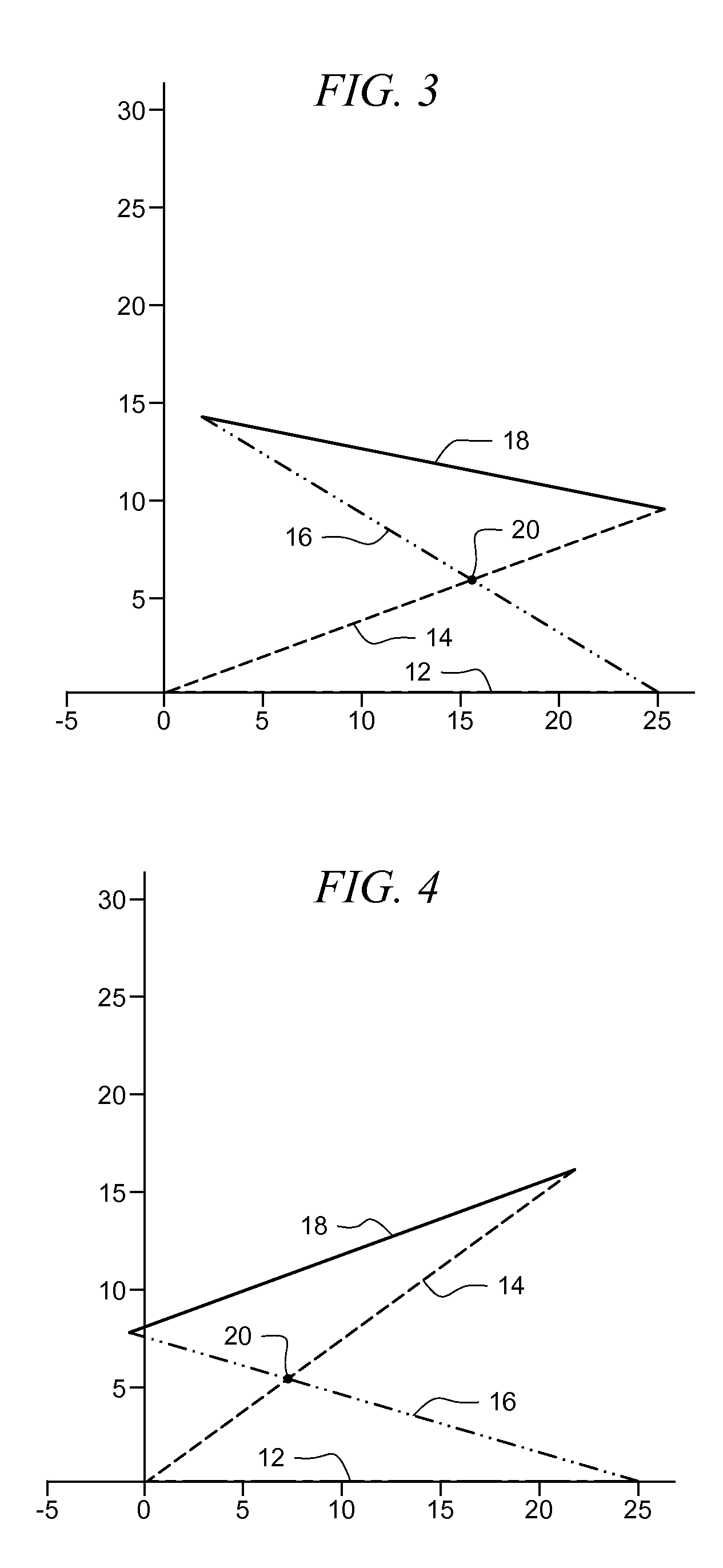Conforming artificial finger mechanism
a finger mechanism and finger technology, applied in the field of prosthetics, can solve the problems of affecting the performance of conventional designs of artificial hands, affecting the ability of conventional artificial hands to grasp different shapes and sizes of objects, and requiring complex control systems to coordinate articulation, so as to achieve the versatility of objects in shapes and sizes, less energy required to power, and increase surface contact
- Summary
- Abstract
- Description
- Claims
- Application Information
AI Technical Summary
Benefits of technology
Problems solved by technology
Method used
Image
Examples
Embodiment Construction
[0044]Referring now to FIG. 1, it will there be seen that the novel structure is denoted diagrammatically as a whole by the reference numeral 10. It includes a crossed four (4) bar linkage system having a base formed by base bar 12, two cross bars 14 and 16, and an interface bar 18. Base bar 12 is affixed to an artificial finger of an amputee. It may be adapted to be attached to various prosthetic devices for finger, hand, forearm, and transhumeral (arm) amputations.
[0045]Cross bar 14 has a first end pivotally mounted to a first end of base bar 12 and cross bar 16 has a first end pivotally mounted to a second end of said base bar 12. Cross bar 14 has a second end pivotally mounted to a second end of interface bar 18 and cross bar 16 has a second end pivotally mounted to a first end of said interface bar 18. The pivot points are defined by simple, uniplanar, hinge joints. In the simplest cases the finger may not have intermediate articulations.
[0046]As indicated by FIGS. 1-5, the nov...
PUM
 Login to View More
Login to View More Abstract
Description
Claims
Application Information
 Login to View More
Login to View More - R&D
- Intellectual Property
- Life Sciences
- Materials
- Tech Scout
- Unparalleled Data Quality
- Higher Quality Content
- 60% Fewer Hallucinations
Browse by: Latest US Patents, China's latest patents, Technical Efficacy Thesaurus, Application Domain, Technology Topic, Popular Technical Reports.
© 2025 PatSnap. All rights reserved.Legal|Privacy policy|Modern Slavery Act Transparency Statement|Sitemap|About US| Contact US: help@patsnap.com



